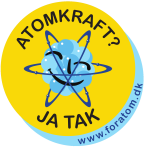A pressurized Water Reactor (PWR) is a type of light water reactor.
How does a pressurized water reactor work?

A pressurized water reactor means water cannot boil around the fuel elements because they are under high pressure. It runs with three separate isolated circuits. A primary, a secondary circuit, and a third circuit. The temperatures and pressures mentioned here are just examples and may vary depending on the design of the PWR.
The primary circuit
First, water is pumped under high pressure to the reactor core, where the nuclear fission process heats the water from about 290°C to about 325°C. Because the water in the reactor is kept under high pressure of about 160 bar, it does not boil to steam but remains a liquid. The pressure is controlled by a separate pressure vessel connected to the primary circuit.
Water from the reactor core flows to the steam generator, giving off its heat through pipes. The nuclear water flows back to the reactor to be reheated, repeating the process.
The second circuit
The steam generator absorbs the heat from the pipes of the primary circuit. The water is heated to around 280°C. At low pressure, approximately 60 bar, the water boils and generates steam that rises and flows through a pipe and drives a steam turbine connected to a generator that produces electricity.
The steam then falls into a condenser, becoming liquid water again. The water is then pumped back to the steam generator to be heated, which is repeated.
The third circuit
Cools the heat released in the condenser via a cooling water system, either via a cooling tower or to natural water, e.g., sea, lake, or river.




